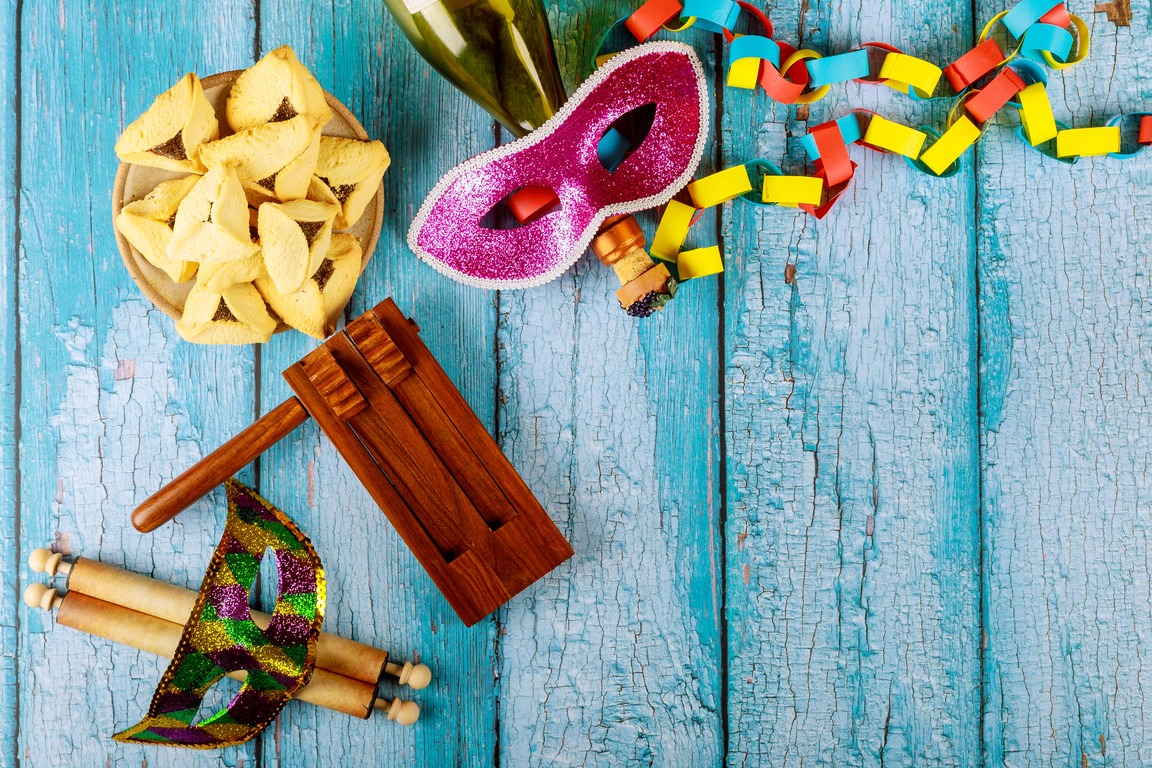Purim is a renowned Jewish festival celebrated to commemorate the deliverance of the Jewish people from a genocidal plot during the Persian Empire. Purim celebration takes place on the 14th day of the Hebrew month of Adar, which usually falls in February or March.
The Jewish people were saved from the cruel genocidal plans of Haman, who was the royal vizier to the Persian king Ahasuerus. His plans were foiled by Mordecai and Esther, queen of Persia. The day of their deliverance became a day of feasting and rejoicing among people of Jewish faith. The significance of Purim’s themes of courage, resilience, and divine intervention remains timeless, resonating with people of all backgrounds.
This joyous festival embraces inclusivity, inviting people of all faiths to join in on the festivities and feasting.
Keep reading to learn more about the joyous festival of Purim.
Jewish Celebration of Purim: How Did It Begin?
The Jewish festival of Purim originated way back in 5th Century BC. According to the Scroll of Esther Haman who was the royal vizier to the Persian king Ahasuerus hatched a plan to exterminate all the jews in the empire claiming that they were rebellious. Esther, who is Ahasuerus’ new wife is of Jewish faith but does not disclose the truth about her faith, as she discovers Haman’s cruel plans, she decides to maintain a fast and pray for three days during which she decides to seek help from the king himself despite it being against the law.
Esther asks both the king and Haman to attend a feast, where she reveals that she is Jewish and reveals Haman’s cruel plan to exterminate her people. Ahasuerus is enraged and orders Haman to be hanged. He allows Esther and her cousin Mordecai to write another decree; they decree that Jewish people may kill those thought to pose a lethal risk, and as a result, on 13 Adar 500 attackers and several of Haman’s sons are killed, and an annual commemoration of the delivery of Jewish people from annihilation is instituted.
How Purim is Celebrated: Purim Customs and Traditions
The Purim festival has four main observances (mitzvot) as follows:
Reading of the Megillah (book of Esther)
The reading of the Megillah is one of the main components of the Purim celebration. The reading normally takes place in the synagogue and is read twice. Once in the evening and once again in the following morning. During the reading, the congregation is encouraged to make noise and drown out the name of Haman with noisemakers known as graggers.
Festive Meals and Feasting
It is also a time for feasting and rejoicing. It is traditional to have a Purim Seudah (feast) on the day of the festival. Popular Purim food includes hamantaschen, which are triangular cookies with poppy seeds or other sweet fillings. Kreplach is also popular during this festival. It is customary to serve food at the Purim meal that has symbolic meaning linking to the Purim story. It is also customary to fast on the day before Purim, commemorating Esther’s fasting and prayer. Another popular tradition is to serve a vegetarian meal as a nod to Queen Esther, who is said to have maintained a vegetarian diet to remain Kosher.
Charity and Gift-Giving
An important aspect of the festival is mattanot la-evyonim, which is donating charity to the poor. And another important aspect is mishloach manot. It is when you exchange Purim gifts with friends and family, the gifts being baskets of food and drink. This practice is a way of promoting unity and friendship among the Jewish community.
Put on a Costume
A unique tradition of Purim is wearing costumes and masks. The most widely accepted reason for dressing up on Purim is to replicate Esther hiding her Jewish identity from the king. Some people also believe that the tradition originated in Italy. Today, people of all ages dress in costumes, often related to the Purim story, and participate in costume contests and parades. Purim costumes include those of Queen Esther, King Achaverosh, Mordechai, and Haman.
You will see many little kids embracing Purim Day costumes, dressed up as characters from the tale. Purim also sets the vibe for a lot of fun and feasting. Purim decorations often follow the color scheme of gold, purple, and green.
Modern Day Purim Observance
What is the modern-day significance of Purim? Purim is an affirmation of Jewish salvation and resilience. Haman resembles the oppression of Jewish people, and the story of Purim represents Jews overcoming their oppressors.
Esther can be seen as a role model for women to take active roles in leadership, and her story is more than inspirational. When given the choice to continue to hide her identity or save her people she chose the latter.
A Purim Holiday: Take Your Festivities to Poconos
Spread the joy and fun of Purim in the great outdoors of Poconos. This year, make your Purim festivities extra special by exploring the Pocono Mountains along with your loved ones. The Poconos have a wonderful and tightly knit Jewish community and synagogues where delightful celebrations of Purim take place each year.
The Poconos also has some brilliant kosher restaurants where you and your family can enjoy a delicious Purim feast!
You can enjoy a Purim staycation in Poconos in any of these Kosher-friendly properties.
Winding Up
The legacy of Purim is a celebration of triumph, unity and resilience, inspiring people of all backgrounds to overcome adversity and embrace hope.
The story of Purim showcases the importance of community more than anything. Let it be an inspiration for you to learn more about the practices of other faiths and help foster interfaith dialogue and understanding between communities.
Wishing you all a happy and joyful Purim!
FAQs
Q: What makes Purim more than just a Jewish holiday?
A: It’s about joy, resilience, and standing up against injustice—values that everyone can relate to.
Q: Why do people wear costumes on Purim?
A: It’s a fun way to symbolize hidden miracles and remind us that things aren’t always as they seem.
Q: How is Purim celebrated worldwide?
A: From carnival-style parades in Israel to festive plays in Italy and USA, Purim is a global celebration with unique traditions




